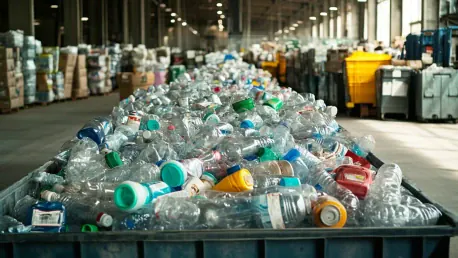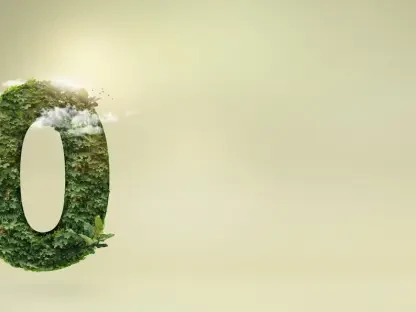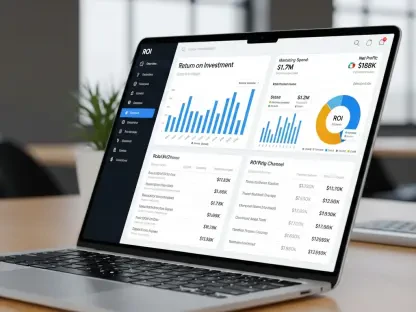Walmart recently admitted that it is unlikely to meet its 2025 targets for reducing plastic packaging and enhancing recyclability, a confession that highlights the formidable challenges faced by industries aiming for ambitious sustainability goals. Earlier this year, the retailer also revealed that it would miss its greenhouse gas emissions reduction targets set for 2025 and 2030. Despite dedicated efforts and notable progress in several areas, Walmart acknowledges that these achievements are insufficient to meet the original goals, underscoring the complexity of executing large-scale sustainable practices.
Disclosure of Missed Targets
Walmart has publicly acknowledged that its 2025 objectives for cutting down plastic packaging and improving recyclability are improbable to be reached. This admission comes with a detailed explanation of the significant advancements made in these areas, which, despite being commendable, have fallen short of the preset goals. Efforts to increase the use of post-consumer recycled (PCR) materials and boost packaging circularity have been sustained over the years. However, these efforts have not progressed at the anticipated pace, primarily due to numerous challenges that have emerged.
The retailer’s transparency in admitting the likelihood of missing these crucial targets also reflects its commitment to sincerity and accountability in its sustainability journey. By disclosing these setbacks, Walmart aims to provide a real-time understanding of the intricacies involved in the process of implementing sustainable packaging solutions. This level of transparency is crucial for fostering trust among consumers and stakeholders, ensuring that the brand remains a responsible entity in the retail sector.
Increased Plastic and Packaging Use
One of the major setbacks that Walmart has encountered is the rise in the weight of virgin plastic used, a consequence of expanding product categories, especially in the food sector. Despite this increase, the company asserts it has managed to decrease the overall intensity of plastic packaging. This implies that while the total volume of plastic might have surged, the amount of plastic used concerning each unit of product has been incrementally reduced, reflecting a nuanced approach to sustainability.
Walmart’s strategy has been to balance the demand for new product lines while endeavoring to reduce plastic usage. Efforts have included optimizing packaging design, sourcing more sustainable materials, and exploring innovative packaging solutions. Nonetheless, the growth in product categories, driven by consumer demand and market dynamics, has inevitably led to an uptick in plastic consumption. This delicate balancing act of catering to market needs while striving for sustainability underscores the complex landscape retailers operate within.
External Challenges and Limitations
Several external factors have been identified as key obstacles in meeting the sustainability targets. Among these, the limited availability of high-quality PCR materials stands out as a significant barrier. Recycled materials of requisite quality and quantity are essential for sustaining large-scale packaging initiatives, and their scarcity has constrained progress. Price volatility of recycled materials further complicates procurement strategies, making it challenging to consistently source these materials at economically viable rates.
Regulatory restrictions and fragmented regulations across different regions also play a crucial role in hindering Walmart’s sustainability efforts. The adherence to a myriad of regulatory standards and the need for continual adaptation to evolving legislative landscapes pose significant challenges. Walmart emphasizes that these hurdles are not unique to them but are industry-wide issues affecting many companies pursuing similar sustainability goals. The collective industry effort required to overcome these barriers underscores the need for concerted actions and policy harmonization.
Sustainability Initiatives
In spite of these setbacks, Walmart remains committed to its sustainability initiatives, demonstrating resilience and adaptability in its approach. The company has taken notable steps in reducing its environmental footprint, such as replacing plastic mailers with paper alternatives for e-commerce orders and right-sizing cardboard boxes to minimize waste. These initiatives reflect Walmart’s proactive stance in mitigating the environmental impact of its operations, even amid the challenges encountered.
Additionally, Walmart has introduced compostable single-use cutlery, aiming to offer more sustainable options to its customers. This move aligns with the broader consumer trend towards eco-friendly products, catering to the growing demand for sustainable solutions. These efforts are part of a larger strategy to align with broader industry practices and consumer expectations for sustainability. Walmart’s continued investment in research and development of sustainable packaging solutions showcases its long-term commitment to environmental stewardship.
Global Participation and Future Goals
Walmart recently conceded that it is unlikely to meet its 2025 targets for reducing plastic packaging and enhancing its recyclability, shedding light on the significant hurdles industries encounter while striving for ambitious sustainability objectives. Earlier this year, the retail giant also disclosed that it would fail to achieve its greenhouse gas emissions reduction targets set for 2025 and 2030. Despite committed efforts and notable advancements in several domains, Walmart admits that these accomplishments fall short of the original targets, emphasizing the intricate nature of implementing broad-scale sustainable practices. This admission brings to the forefront the formidable obstacles companies face in aligning large-scale operations with lofty, long-term environmental goals. It also serves as a critical reminder for all industries about the necessity of revisiting and possibly recalibrating their strategies to make meaningful progress toward a sustainable future.









